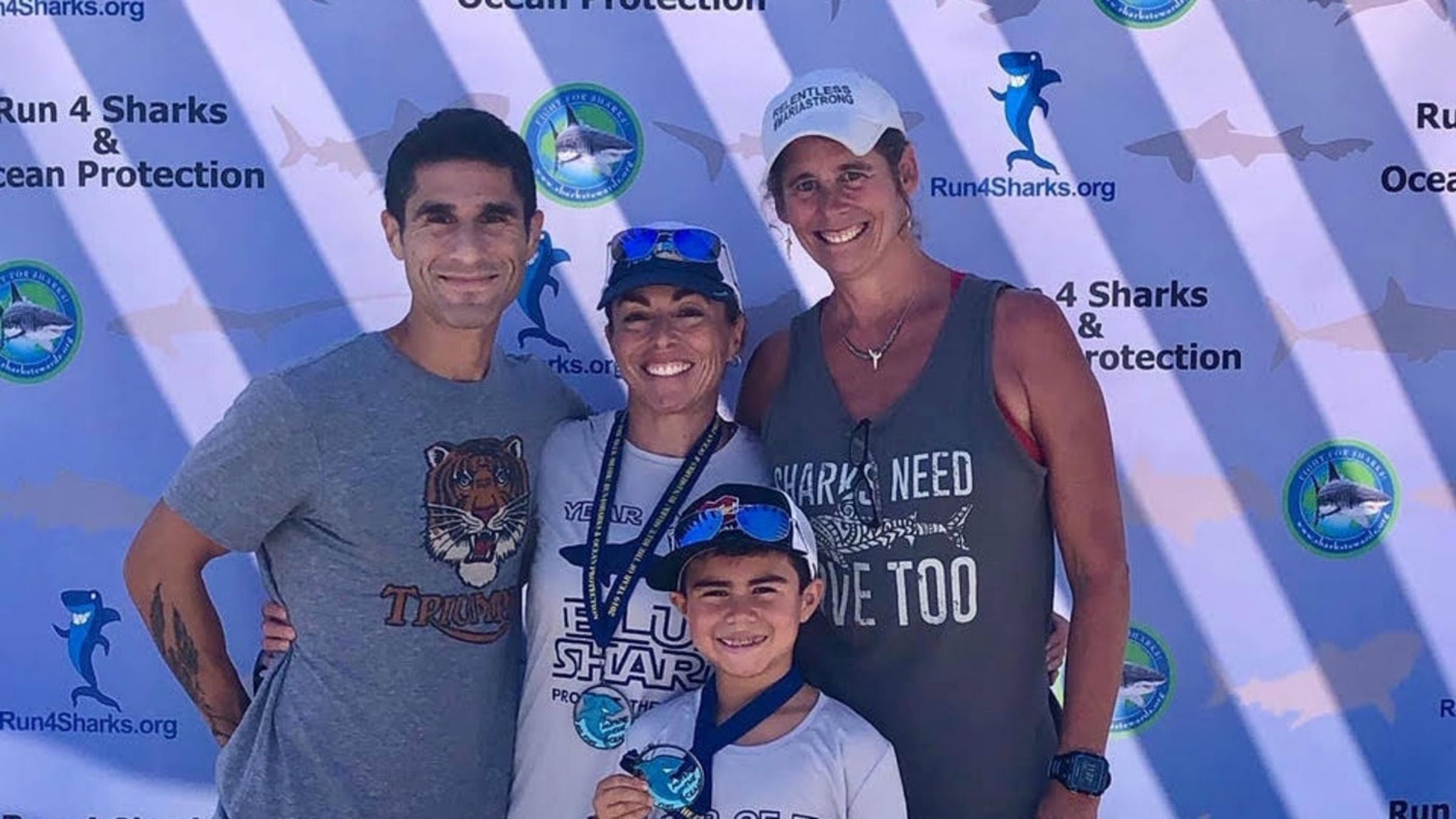From Shark Attack to Shark Advocacy

(Photo: Maria Korcsmaros)
When Maria Korcsmaros was attacked by a shark while open-water swimming, her first thought was not panic or dread. It was, Holy shit, Martha was right.
“My triathlon coach had always talked about the s-word to the newbies,” recalls Korcsmaros, 56. “She would tell us that just like falling off your bike, I need to tell you about the hazards you may face.”
Korcsmaros’ home in Corona, California, is the ideal location for a triathlete-in-training. Located just outside of Anaheim, the town boasts plenty of parks and mountain reserves for running and cycling, and is a short drive to the ocean for open-water swimming. Newport Beach was a favorite, and it was there, in 2016, that she was bit by a 10-foot great white shark during a training swim.
Korcsmaros’ injuries were nearly fatal. Had lifeguards not been training nearby — close enough to pluck her out of the water almost immediately after the attack – it’s likely she wouldn’t have survived. The shark’s sharp teeth inflicted wounds on her pelvis, shoulder, back, and buttocks. In total, it took more than 160 staples to repair the damage. She also suffered a punctured lung and several cracked ribs.
True to triathlete form, Korcsmaros immediately wanted to know if she could still race. “I had been doing triathlons since 1997. I loved the fact that you could do all three sports in one race and work your whole body. I knew I wanted to get back in.” She laughs before adding, “And I had a race in October 2016 that I had already paid for, so I thought You better get back in to prepare!”
And getting back in meant getting into the water – literally. Korcsmaros was, understandably, hesitant at first. But she approached a return to the ocean as a necessary part of her recovery: “Like getting back on the horse that throws you,” she says.
This happened in the form of a “Bite Club” made of other California shark-bite survivors Korcsmaros met after her attack: “They helped me have the courage to go to ‘that’ spot and swim the whole buoy line. It was very challenging, but also very empowering.”
Recovery also meant learning how to respond to people when they expressed negative opinions of sharks. Korcsmaros didn’t want people to villainize sharks, even one had attacked her so gruesomely. Like her coach, Korcsmaros views sharks simply as a reality of coexisting with nature.
“I chose to become an advocate for sharks because I wanted people to understand that it really is a rare occurrence,” says Kocsmaros. The US averages just 19 shark attacks each year and one shark-attack fatality every two years; that is a small number in comparison to the 73 million sharks killed by humans each year for use as a medicinal product in China and culinary delicacy in Japan. As a result, many species of sharks are on the brink of extinction.
Korcsmaros explains that without sharks, the ocean ecosystems will suffer. Sharks keep the marine ecosystem in balance by feeding on animals lower in the food chain. If sharks go extinct, other predatory fish and marine animals will thrive, depleting the amount of fish available for food. Additionally, sharks are integral to the carbon cycle; if they disappear, the carbon-loading of the atmosphere will increase, causing damage in the form of global warming.
In 2018, Korcsmaros launched Run4Sharks, a 5K and 1-mile fun run event to benefit shark conservation efforts. The event, held at Newport Beach, also serves as a way for Korcsmaros to educate people on the reality – and necessity – of coexisting with marine life.
“Sharks play a vital role in the health of ocean ecosystems. If we want to continue surfing, swimming, sailing and enjoying the bounty of the ocean, we first need to protect the ocean.”